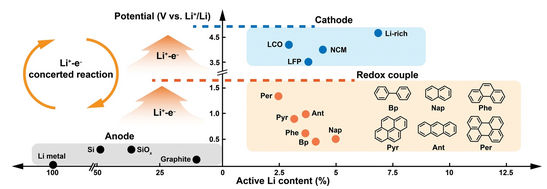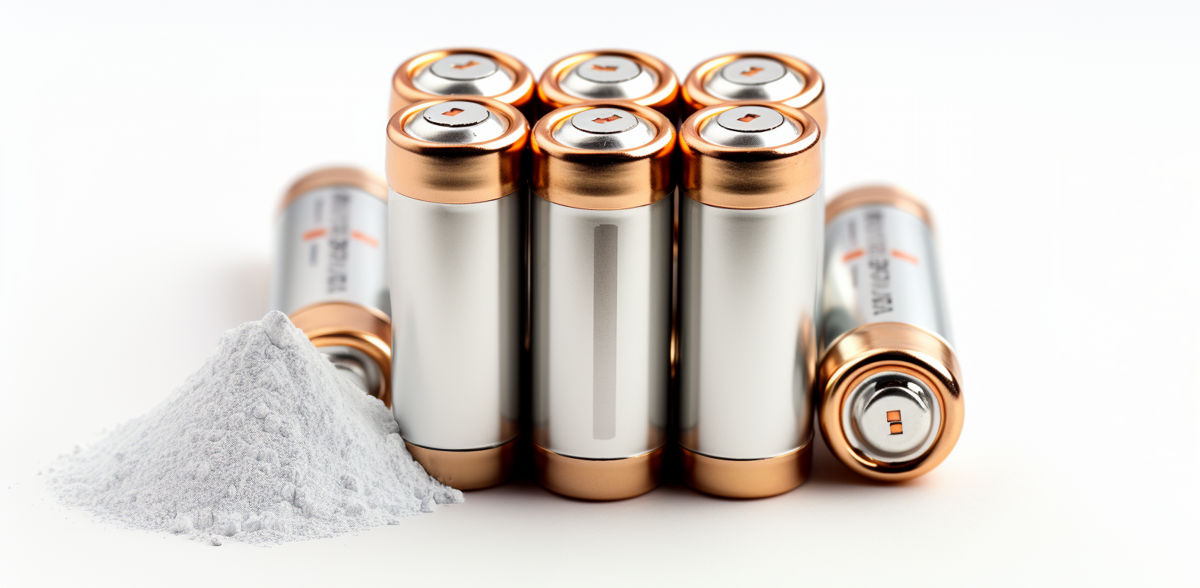Lithium Recovery
Efficient and mild: recycling of used lithium-ion batteries
Lithium-ion batteries (LIBs) provide our portable devices like tablets and mobiles—and increasingly also vehicles—with power. As the share of volatile renewable energy needing electricity storage increases, more and more LIBs are needed, lithium prices rise, resources dwindle, and the amount of depleted batteries that contain toxic substances increases. In the journal Angewandte Chemie, researchers introduce a novel approach for the recovery of lithium from used LIBs.

© Wiley-VCH
The recycling of LIBs is a difficult undertaking. The recovery of lithium of a quality high enough to be used again is complicated and expensive. Most recycling processes are targeted at extracting the lithium from cathodes (where most of the lithium in discharged batteries is located). However, it then precipitates out together with other metals contained in the cathode and must be painstakingly separated. Extraction from the anodes, which consist primarily of graphite, is significantly more efficient and can be carried out without discharging the battery beforehand. Because of their high reactivity, however, the risk of fires and explosions is high if the anodes are leached out with aqueous solutions, as is usual. These reactions release large amounts of energy and may produce hydrogen.
A team led by Yu-Guo Guo and Qinghai Meng at the Institute of Chemistry of the Chinese Academy of Sciences (ICCAS) and the University of Chinese Academy of Sciences (UCAS) has now developed an alternative method that avoids these problems. Instead of water, they use aprotic organic solutions to recover lithium from anodes. Aprotic substances cannot release any hydrogen ions, so no hydrogen gas can form.
The solutions consist of a polycyclic aromatic hydrocarbon (PAH) and an ether as the solvent. Certain PAHs can take up a positively charged lithium ion from the graphite anode together with one electron. Under mild conditions, this redox reaction is controlled and very efficient. With the PAH pyrene in tetraethylene glycol dimethyl ether, it was possible to dissolve the active lithium from the anodes almost completely.
An additional advantage is that the resulting lithium-PAH solutions can be used directly as reagents, for example, in adding lithium to new anodes in preprocessing or in regenerating spent cathodes. The PAH/solvent system can be varied to optimize it for the material being treated.
This recovery process is efficient and inexpensive, reduces safety risks, avoids waste, and opens new prospects for the sustainable recycling of lithium-ion batteries.
Original publication
Other news from the department science
These products might interest you
Most read news
More news from our other portals
See the theme worlds for related content
Topic World Battery Technology
The topic world Battery Technology combines relevant knowledge in a unique way. Here you will find everything about suppliers and their products, webinars, white papers, catalogs and brochures.

Topic World Battery Technology
The topic world Battery Technology combines relevant knowledge in a unique way. Here you will find everything about suppliers and their products, webinars, white papers, catalogs and brochures.
































































